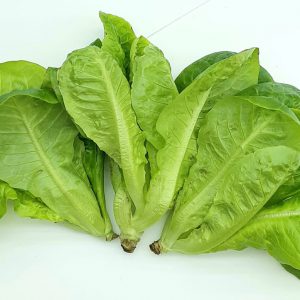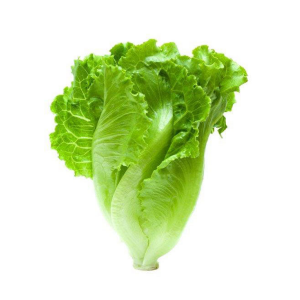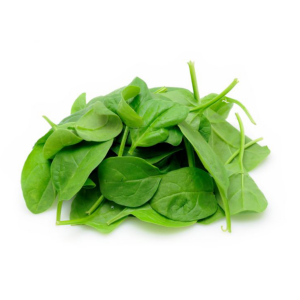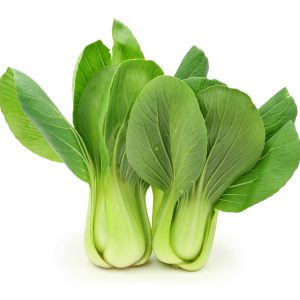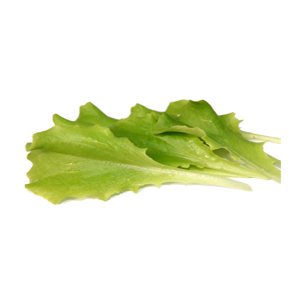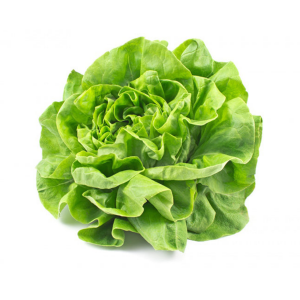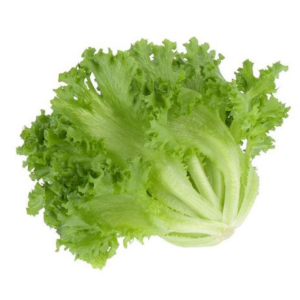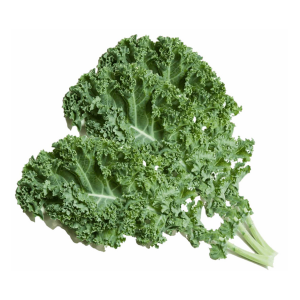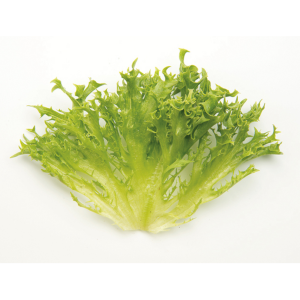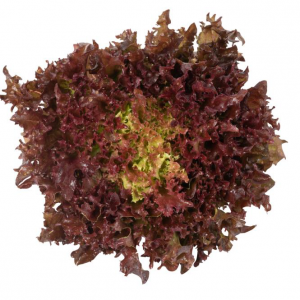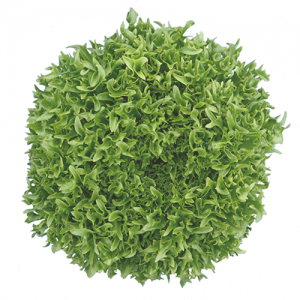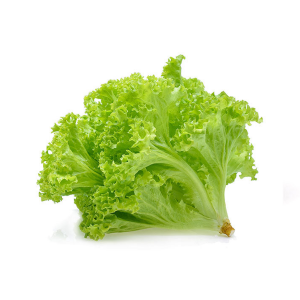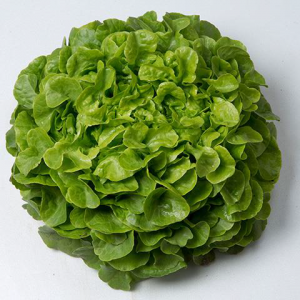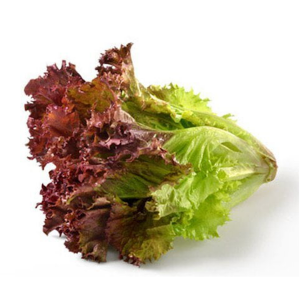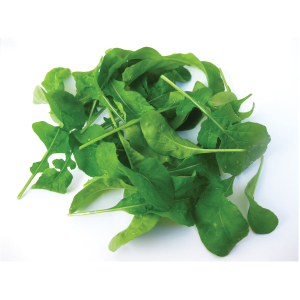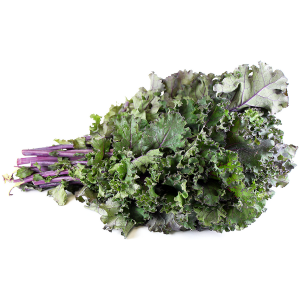Showing 1–16 of 18 results
Baby Romaine Lettuce
RM5.80Romaine, also called cos, is another popular lettuce that???s common in Caesar salads.
It bears green, crunchy leaves with large veins. Premature leaves, which are sometimes red, are frequently added to spring mix ??? a combination of baby leaves from several leafy vegetables.
Romaine is higher in nutrients than crisphead. A 3.5-ounce (100-gram) serving provides (10Trusted Source):
- Calories:??17
- Protein:??1 gram
- Fiber:??2 grams
- Folate:??34% of the DV
- Iron:??5% of the DV
- Manganese:??7% of the DV
- Potassium:??5% of the DV
- Vitamin A:??48% of the DV
- Vitamin C:??4% of the DV
- Vitamin K:??85% of the DV
It???s not only an excellent source of folate and vitamin K but also??vitamin A.
Moreover, romaine is a good source of phenolic compounds, particularly caffeic acid and chlorogenic acid.
What???s more, red romaine boasts high levels of anthocyanins, which give certain vegetables and fruits a??reddish-purple color.
Baby Spinach
RM9.20These tender??baby??leaves have a slightly bolder taste than larger, mature??spinach.
Spinach (Spinacia oleracea) is a leafy green vegetable that originated in Persia.
It belongs to the amaranth family and is related to beets and quinoa. What???s more, it???s considered very healthy, as it???s loaded with nutrients and antioxidants.
Eating spinach may benefit eye health, reduce oxidative stress, help prevent cancer, and reduce blood pressure levels.
There are many ways to prepare spinach. You can buy it canned or fresh and eat it cooked or raw. It???s delicious either on its own or in other dishes.
The nutrition facts for 3.5 ounces (100 grams) of raw spinach are (1Trusted Source):
- Calories:??23
- Water:??91%
- Protein:??2.9 grams
- Carbs:??3.6 grams
- Sugar:??0.4 grams
- Fiber:??2.2 grams
- Fat:??0.4 grams
Most of the carbs in spinach consist of fiber, which is incredibly healthy.
Spinach also contains small amounts of??sugar, mostly in the form of glucose and fructose (1Trusted Source).
Spinach is high in??insoluble fiber, which may boost your health in several ways (2Trusted Source).
It adds bulk to stool as food passes through your digestive system. This may help prevent constipation.
Batavia Babyleaf Lettony Lettuce
RM6.00Batavia lettuce resembles ordinary lettuce, but has more crinkled leaves and a wavy leaf margin.
There are bright green and red-brown varieties. Actually, Batavia lettuce is a very authentic type of lettuce and the precursor of the well-known Iceberg lettuce.
Batavia lettuce leaves are typically sweet and crisp.
Culinary use:
-
A perfect leaf base to build your salad, can be mixed with other types of lettuce.
-
In a summer salad with, for example, with diced capsicum and goat cheese.
-
Salad sandwiches with cheese, sausage or tuna salad.
-
Rolled up in wraps with, for example, smoked chicken and cream cheese.
Health benefits:
-
High in nutrients but low in calories.
-
Very hydrating.
-
Loaded with powerful antioxidants.
-
May keep your heart healthy.
-
Excellent source of vitamin A.
-
Packed with vitamin K.
Butterhead Lettuce
RM5.50Butterhead lettuce gets its name from its characteristically soft, buttery leaves. It???s also known as cabbage lettuce due to its round shape. The most popular types of butterhead are Bibb and Boston lettuce.
Its leaves have a crumpled look that resembles flower petals. Butterhead lettuce is usually deep green, although red varieties exist.
It???s rich in nutrients, with 3.5 ounces (100 grams) offering (17Trusted Source):
- Calories:??13
- Protein:??1.5 grams
- Fiber:??1 gram
- Folate:??18% of the DV
- Iron:??8% of the DV
- Manganese:??8% of the DV
- Potassium:??5% of the DV
- Vitamin A:??18% of the DV
- Vitamin C:??4% of the DV
- Vitamin K:??85% of the DV
This lettuce is a good source of carotenoid antioxidants, such as beta carotene, lutein, and zeaxanthin. These protect your eyes from macular degeneration, a condition that can result in partial vision loss (18Trusted Source).
Furthermore, butterhead contains??higher amounts of iron??than other lettuces. This nutrient is essential for creating red blood cells (9,??19Trusted Source).
Keep in mind that plants provide only non-heme iron, which is poorly absorbed. As vitamin C helps increase your absorption, consider eating butterhead lettuce with a??food high in this vitamin, such as red peppers (19Trusted Source).
Curly Crisp Lettuce
RM6.40Similarly to other leafy greens, this veggie packs amble nutrients into very few calories. Every 2 cups (85 grams) of raw ??? about one-sixth of a medium head ??? provides (5Trusted Source,??6Trusted Source):
- Calories:??15
- Carbs:??3 grams
- Protein:??1 gram
- Fat:??0 grams
- Fiber:??3 grams
- Iron:??4% of the Daily Value (DV)
- Vitamin A:??58% of the DV
- Vitamin K:??164% of the DV
- Vitamin C:??10% of the DV
- Folate:??30% of the DV
- Zinc:??6% of the DV
- Copper:??9% of the DV
With very few calories and no fat, escarole heaps micronutrients and fiber ??? just 2 raw cups (85 grams) deliver 12% of the DV for fiber (7Trusted Source).
What???s more, this same serving provides 9% of the DV for copper and 30% for folate. Copper supports proper bone, connective tissue, and red blood cell formation, whereas??folate??helps ensure proper metabolism and create red and white blood cells (8Trusted Source,??9Trusted Source).
Both minerals are especially important for proper fetal development and thus vital for??women who are pregnant??or planning to become pregnant (9Trusted Source,??10Trusted Source).
Curly Kale
RM10.50Of all the super healthy greens, kale is king.
It is definitely one of the healthiest and most nutritious plant foods in existence.
Kale is loaded with all sorts of beneficial compounds, some of which have powerful medicinal properties.
A single cup of raw kale (about 67 grams or 2.4 ounces) contains (1):
- Vitamin A:??206% of the DV (from beta-carotene)
- Vitamin K:??684% of the DV
- Vitamin C:??134% of the DV
- Vitamin B6:??9% of the DV
- Manganese:??26% of the DV
- Calcium:??9% of the DV
- Copper:??10% of the DV
- Potassium:??9% of the DV
- Magnesium:??6% of the DV
- It also contains 3% or more of the DV for vitamin B1 (thiamin), vitamin B2 (riboflavin), vitamin B3 (niacin), iron and phosphorus
This is coming with a total of 33 calories, 6 grams of carbs (2 of which are fiber) and 3 grams of protein.
Kale contains very little fat, but a large portion of the fat in it is an omega-3 fatty acid called alpha linolenic-acid.
Kale Is Loaded With Powerful Antioxidants Like Quercetin and Kaempferol
It Is an Excellent Source of Vitamin C
There Are Numerous Cancer-Fighting Substances in Kale
Kale Is Very High in Beta-Carotene
Kale Is High in Lutein and Zeaxanthin, Powerful Nutrients That Protect the Eyes
Easy Leaf – Green
RM6.50Crispy lettuce with an excellent taste, and very decorative. Contains plenty of vitamin C, calcium, and iron.
Easy Leaf – Red
RM8.00Crispy lettuce with an excellent taste, and very decorative. Contains plenty of vitamin C, calcium, and iron.
Ezfrill
RM8.00Crispy lettuce with an excellent taste, and very decorative. Contains plenty of vitamin C, calcium, and iron.
Green Coral Lettuce
RM6.50Coral lettuce, also known as loose-leaf lettuce, varies in shape, color, and texture ??? though it???s usually crisp, ruffled, and dark green or red, with a flavor ranging from mild to sweet.
Unlike other lettuces, it doesn???t grow around a head. Instead, its leaves come together at a stem.
A 3.5-ounce (100-gram) serving of either green or red leaf lettuce gives the following nutrients (20Trusted Source,??21Trusted Source):
| Leaf lettuce, green | Leaf lettuce, red | |
| Calories | 15 | 13 |
| Protein | 2 grams | 1.5 grams |
| Fiber | 1 gram | 1 gram |
| Folate | 10% of the DV | 9% of the DV |
| Iron | 5% of the DV | 7% of the DV |
| Manganese | 11% of the DV | 9% of the DV |
| Potassium | 4% of the DV | 4% of the DV |
| Vitamin A | 41% of the DV | 42% of the DV |
| Vitamin C | 10% of the DV | 4% of the DV |
| Vitamin K | 105% of the DV | 117% of the DV |
Green leaf lettuce tends to have more vitamin C, while the red variety offers more vitamin K.
Both types are high in vitamin A, beta carotene, lutein, and??zeaxanthin, all of which support eye and skin health (9,??11Trusted Source,??12Trusted Source,??18Trusted Source).
However,??red leaf lettuce??contains much higher levels of phenolic compounds. In particular, its anthocyanins and quercetin act as potent antioxidants that protect your body from free radical damage (9,??22Trusted Source,??23Trusted Source).
Oak Green
RM6.40Crispy lettuce with an excellent taste, and very decorative. Contains plenty of vitamin C, calcium, and iron.
Red Coral Lettuce
RM7.50Coral lettuce, also known as loose-leaf lettuce, varies in shape, color, and texture ??? though it???s usually crisp, ruffled, and dark green or red, with a flavor ranging from mild to sweet.
Unlike other lettuces, it doesn???t grow around a head. Instead, its leaves come together at a stem.
A 3.5-ounce (100-gram) serving of either green or red leaf lettuce gives the following nutrients (20Trusted Source,??21Trusted Source):
| Leaf lettuce, green | Leaf lettuce, red | |
| Calories | 15 | 13 |
| Protein | 2 grams | 1.5 grams |
| Fiber | 1 gram | 1 gram |
| Folate | 10% of the DV | 9% of the DV |
| Iron | 5% of the DV | 7% of the DV |
| Manganese | 11% of the DV | 9% of the DV |
| Potassium | 4% of the DV | 4% of the DV |
| Vitamin A | 41% of the DV | 42% of the DV |
| Vitamin C | 10% of the DV | 4% of the DV |
| Vitamin K | 105% of the DV | 117% of the DV |
Green leaf lettuce tends to have more vitamin C, while the red variety offers more vitamin K.
Both types are high in vitamin A, beta carotene, lutein, and??zeaxanthin, all of which support eye and skin health (9,??11Trusted Source,??12Trusted Source,??18Trusted Source).
However,??red leaf lettuce??contains much higher levels of phenolic compounds. In particular, its anthocyanins and quercetin act as potent antioxidants that protect your body from free radical damage (9,??22Trusted Source,??23Trusted Source).
Rocket
RM4.90Arugula is a peppery, distinctive-tasting green that originated in the Mediterranean region. It???s also known as rucola, salad rocket, and Italian cress. Arugula is a member of the Brassica, or Cruciferous, family. This classification includes mostly cruciferous vegetables, such as Brussels sprouts, kale, cauliflower, and broccoli.
Arugula???s popularity has as much to do with its health benefits as its taste. One??studyTrusted Source??cites arugula as being particularly high in cancer-fighting agents.
This delicious green is a nutrient-dense food that is high in fiber and phytochemicals. Arugula is low in sugar, calories, carbohydrates, and fat. It???s high in several vital nutrients. These include:
- Calcium, which helps the blood to clot normally. It???s also necessary for bone health, tooth health, muscle function, and nerve function.
- Potassium, a mineral and an electrolyte that???s vital for heart and nerve function. It also helps the muscles contract normally. Potassium helps to reduce the negative effects of sodium, and it may be beneficial for people with high blood pressure for this reason.
- Folate, a B vitamin. It helps support the production of DNA and other genetic material. It???s particularly important for women who are pregnant or planning to become pregnant.??Folate deficiency??in pregnant women may lead to??spina bifida, a neural tube defect.
- Vitamin C, a powerful antioxidant that helps support the immune system. Also known as ascorbic acid, vitamin C is important for tissue health and the absorption of iron from food.
- Vitamin K, which helps with blood coagulation. If you require a prescription blood thinner, such as warfarin (Coumadin), discuss your vitamin K intake with your doctor prior to changing your eating habits.
- Vitamin A, the umbrella term for a group of fat-soluble retinoids. Vitamin A is a powerful antioxidant, which supports immune function, cell growth, night vision, and overall eye health. It also works to help maintain kidney, lung, and heart function.
Unlike many subtler-tasting salad greens, arugula???s highly distinctive and peppery crunch adds flair to salads and other cold dishes. Like parsley, it can be chewed to help combat??sour breath.
Arugula can be used in addition to, or in lieu of, most types of lettuce and herbs. It also boasts a distinctive leaf shape.
Scarlet Kale
RM11.50Of all the super healthy greens, kale is king.
It is definitely one of the healthiest and most nutritious plant foods in existence.
Kale is loaded with all sorts of beneficial compounds, some of which have powerful medicinal properties.
A single cup of raw kale (about 67 grams or 2.4 ounces) contains (1):
- Vitamin A:??206% of the DV (from beta-carotene)
- Vitamin K:??684% of the DV
- Vitamin C:??134% of the DV
- Vitamin B6:??9% of the DV
- Manganese:??26% of the DV
- Calcium:??9% of the DV
- Copper:??10% of the DV
- Potassium:??9% of the DV
- Magnesium:??6% of the DV
- It also contains 3% or more of the DV for vitamin B1 (thiamin), vitamin B2 (riboflavin), vitamin B3 (niacin), iron and phosphorus
This comes with a total of 33 calories, 6 grams of carbs (2 of which are fiber) and 3 grams of protein.
Kale contains very little fat, but a large portion of the fat in it is an omega-3 fatty acid called alpha linolenic-acid.
Given its incredibly low calorie content, kale is among the??most nutrient-dense foods in existence.
Kale Is Loaded With Powerful Antioxidants Like Quercetin and Kaempferol
It Is an Excellent Source of Vitamin C
Kale Can Help Lower Cholesterol, Which May Reduce The Risk of Heart Disease
Kale Is One of The World???s Best Sources of Vitamin K
There Are Numerous Cancer-Fighting Substances in Kale
Kale Is Very High in Beta-Carotene
Kale Is a Good Source of Minerals That Most People Don???t Get Enough Of
Kale Is High in Lutein and Zeaxanthin, Powerful Nutrients That Protect the Eyes
